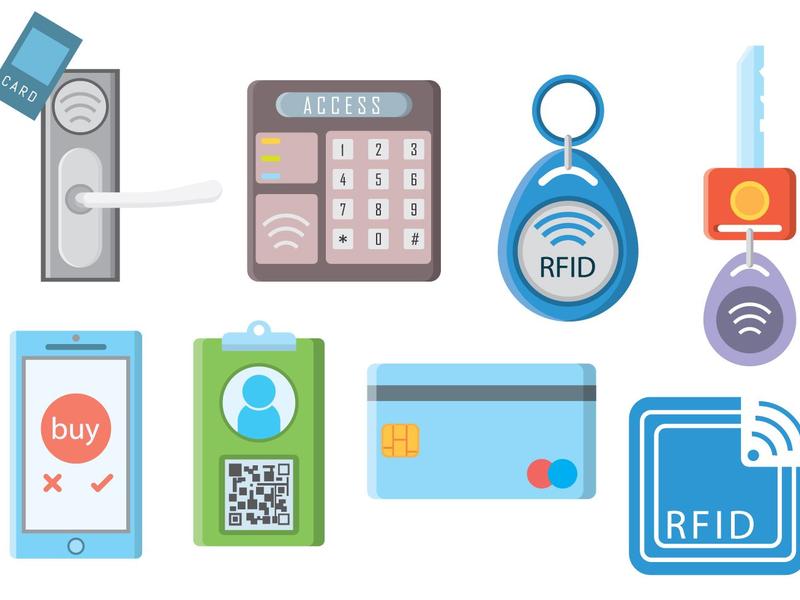About RFID / NFC Technology
Radio-frequency identification (RFID) uses electromagnetic fields to automatically identify and track tags attached to objects. An RFID tag consists of a tiny radio transponder, along with a radio receiver and transmitter. When triggered by an electromagnetic interrogation pulse from a nearby RFID reader, the tag transmits digital data back to the reader, usually an identifying inventory number. This number can be used to manage inventory.
There are two types of RFID/NFC tags: passive and active. Passive tags are powered by the energy from the RFID reader's interrogating radio waves, while active tags are powered by an internal battery, allowing them to be read from greater distances, sometimes up to hundreds of meters. Unlike barcodes, RFID tags do not need to be within the reader's line of sight, making it possible to embed them within tracked objects. RFID is one method of automatic identification and data capture (AIDC).
RFID tags are used in a wide range of industries.
For example, an RFID tag attached to an automobile during production can track its progress through the assembly line. RFID-tagged pharmaceuticals can be tracked through warehouses, and RFID microchips implanted in livestock and pets enable animal identification.
However, since RFID tags can be attached to cash, clothing, and personal possessions or implanted in animals and people, the potential for reading personally linked information without consent has raised significant privacy concerns. In response, standard specifications have been developed to address these privacy and security issues. ISO/IEC 18000 and ISO/IEC 29167 use on-chip cryptography methods for untraceability, tag and reader authentication, and over-the-air privacy protection.
Additionally, ISO/IEC 20248 specifies a digital signature data structure for RFID and barcodes, ensuring the authenticity of data, its source, and the method used for reading it. This work is carried out by ISO/IEC JTC 1/SC 31, which focuses on automatic identification and data capture techniques. RFID tags are also used in retail to expedite checkout and prevent theft by customers and employees.
The global RFID market continues to grow steadily, with market value expected to increase from US$12.08 billion in 2020 to US$16.23 billion by 2029.

